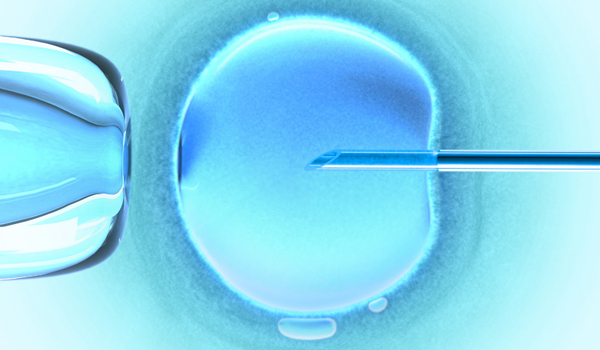
Can you teach an old egg new tricks?
One fertility treatment company claims it can, by rejuvenating women's aging eggs. The company, called OvaScience, says its method aims to improve the health of an egg's mitochondria, which are the tiny powerhouses that give cells the energy to divide and grow.
But experts advise caution over those claims. Although some early evidence suggests aging mitochondria could reduce a woman's fertility, expert say, there are no studies that prove the new method will work. In addition, the company isn't forthcoming with details of its process.
"They're quite private and secretive about what they're doing," said Dr. Aimee Eyvazzadeh, a San Francisco Bay Area ob-gyn and fertility specialist who has no affiliation to OvaScience. "If you were to call as a consumer, they wouldn't tell you anything." [Future of Fertility: 7 Ways Baby-Making Could Change]
What's more, the Food and Drug Administration (FDA) hasn't approved the method that the company says it uses, so the treatment is not available in the United States, just in a few other countries.
Fertility and age
The method is based on the idea that time takes its toll on women's eggs. When a woman is born, she has all the follicles, or immature eggs, she will ever have. At birth, baby girls have millions of follicles in their ovaries, but throughout a woman's life, the follicles die, said Kateryna Makova, a genomicist at Pennsylvania State University in State College, who is not associated with Ova Science.
Sign up for the Live Science daily newsletter now
Get the world’s most fascinating discoveries delivered straight to your inbox.
Once a girl reaches puberty, she begins to ovulate. During ovulation, hormonal spikes spur one egg at a time to mature, after which it is released from the ovary into the fallopian tubes. But by the time a girl starts menstruating, she may have only a few hundred thousand eggs left, and a woman at menopause has almost no follicles left.
Though follicles in the ovary are somewhat protected from damage, various factors can cause genetic mutations that rack up over time, Makova said. Mutations can result from the passage of time, ultraviolet radiation and even inflammation due to illness. These genetic changes occur not only in the nuclear DNA, but also in the DNA found inside the mitochondria.
The older women get, the less likely they are to ovulate, and the eggs they do release are less likely to divide properly and develop into a healthy baby.
"Fertility peaks before age 30," Eyvazzadeh told Live Science. "Very few women have a chance of pregnancy in our 40s."
Refurbished eggs?
Some very early evidence suggests that mitochondria, which are tiny organelles inside the cytoplasm of the egg cell, do change with age. As a result, these cellular power plants may no longer have the right machinery to fuel cell division after fertilization, Eyvazzadeh said.
For instance, a 2014 study by Makova and her colleagues found that children born to older mothers have more mutations in their mitochondria, although she noted that the study didn't directly show that older oocytes have more mitochondrial mutations.
So the treatment has at least some logical basis, Makova said.
"In theory, this might be helpful," she told Live Science. "But how to do this in practice, and how to do this right in practice is difficult to address."
OvaScience claims it has identified a pool of "precursor cells," essentially a kind of stem cell, that can be extracted from a woman's ovary and inserted into her eggs to improve the condition of the mitochondria.
Each oocyte contains many copies of mitochondria, and mitochondria have just 37 genes. So it's possible that during fertility treatment or IVF, some immature eggs in the ovary could be tested to see if they contain healthy mitochondrial DNA free of harmful mutations. Implanting cells from those immature follicles, with their healthy mitochondria, could then provide a power boost to rejuvenate aging eggs, Makova said. [7 Ways Pregnant Women Affect Babies]
Many unknowns
But there are still problems with the idea; for example, the follicles in the ovary are unlikely to be in any better condition than those in the old eggs that mature, Makova said.
"They are also not young," Makova said.
In addition, Eyvazzadeh hasn't seen any published studies proving the existence of the precursor cells the company claims to use.
And even if the mitochondrial DNA could be improved, it's likely there are other factors that make aging eggs a problem, Eyvazzadeh said.
But if the procedure does work, it would be extremely exciting news, Eyvazzadeh said.
"They've said they've discovered this precursor cell in humans and this cell can somehow mature into healthy, young fertilizable eggs? Well, that's awesome, let me at that cell!" Eyvazzadeh said.
Follow Tia Ghose on Twitter and Google+. Follow LiveScience @livescience, Facebook & Google+. Originally published on Live Science.

Tia is the managing editor and was previously a senior writer for Live Science. Her work has appeared in Scientific American, Wired.com and other outlets. She holds a master's degree in bioengineering from the University of Washington, a graduate certificate in science writing from UC Santa Cruz and a bachelor's degree in mechanical engineering from the University of Texas at Austin. Tia was part of a team at the Milwaukee Journal Sentinel that published the Empty Cradles series on preterm births, which won multiple awards, including the 2012 Casey Medal for Meritorious Journalism.









